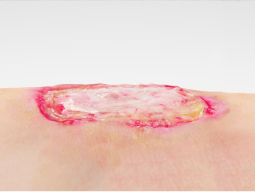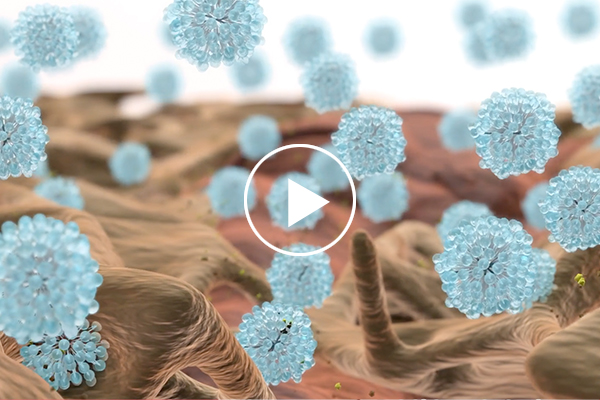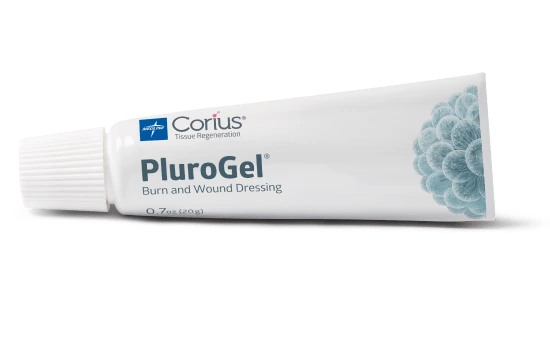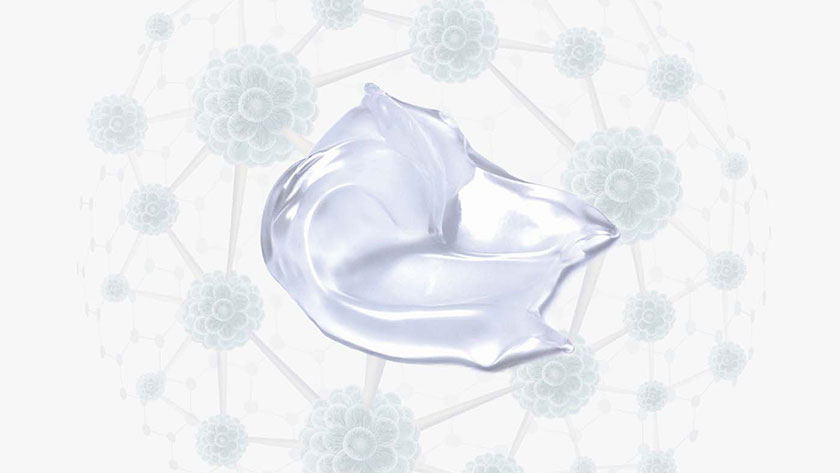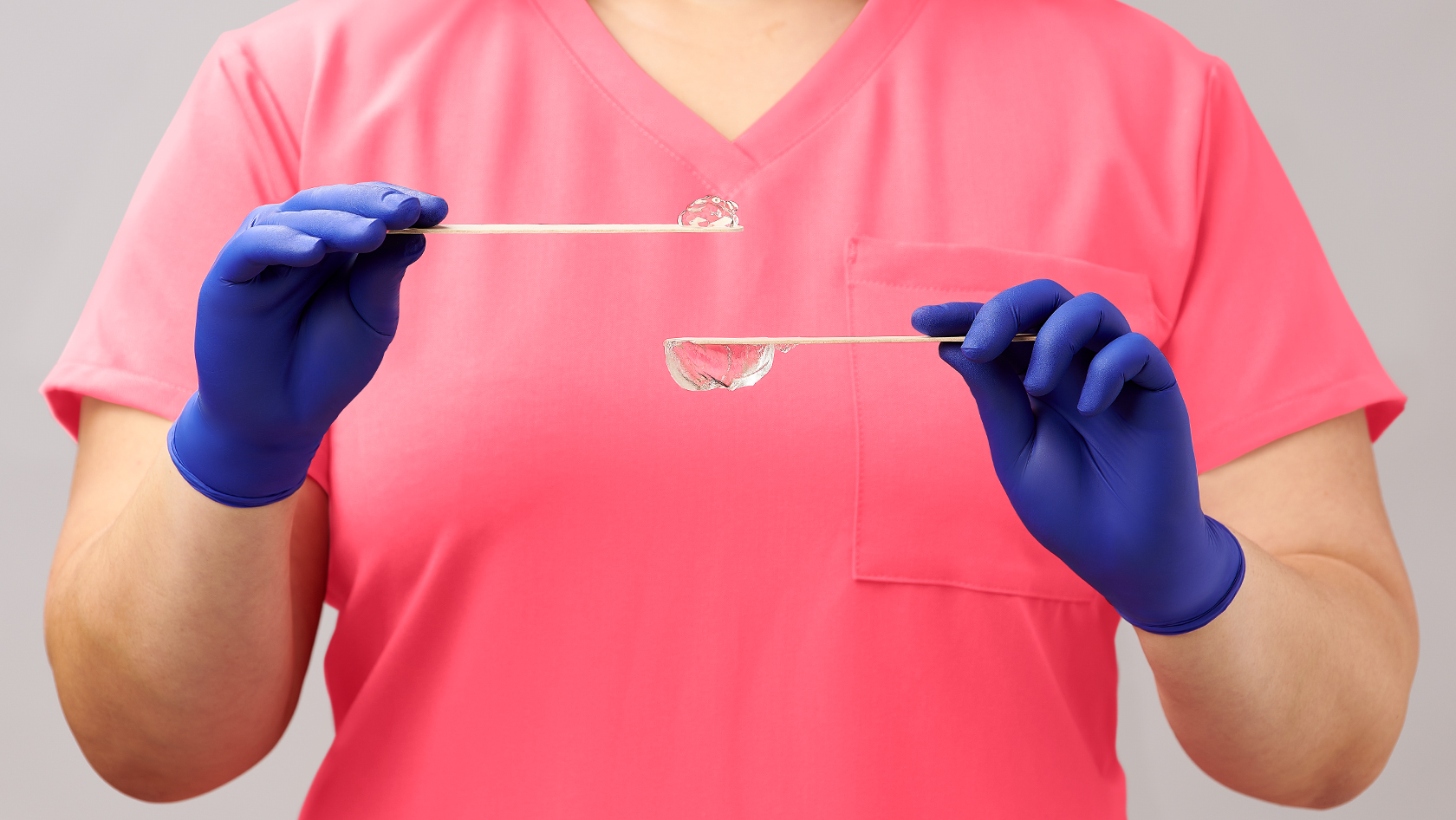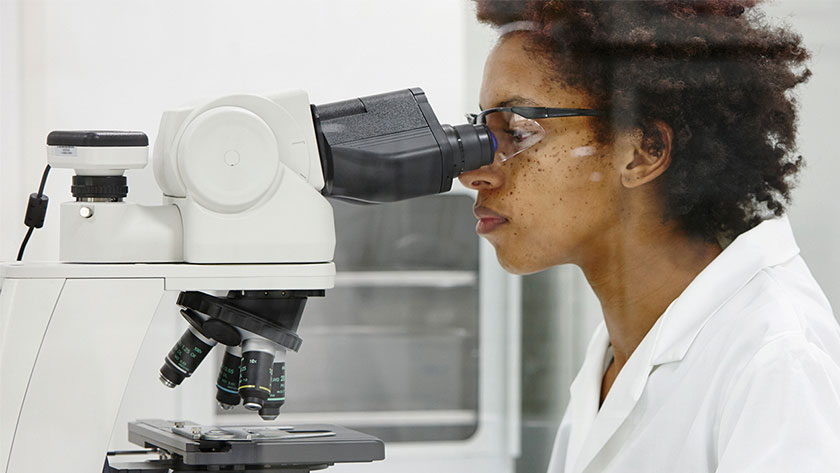What is PluroGel® and how can it help with non-healing wounds?
Get answers to common questions about this popular wound care dressing.
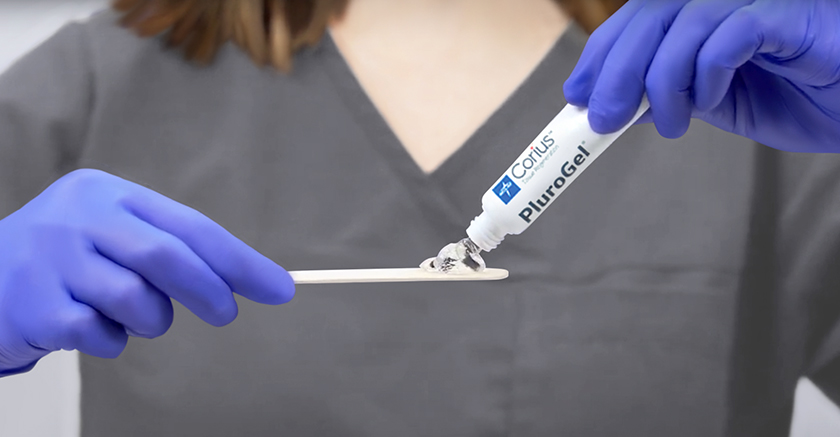
While typical wounds follow a healing process in four general phases—hemostasis, inflammation, proliferation and remodeling—non-healing wounds get stuck in the inflammatory phase. Non-healing wounds, also called stalled or chronic wounds, are becoming more prevalent and more challenging to treat. PluroGel® Burn and Wound Dressing is the first and only concentrated surfactant gel to help manage the barriers to healing and jump-start non-healing wounds.
In this article, we answer frequently asked questions about PluroGel.
What is PluroGel?
PluroGel Burn and Wound Dressing is a surfactant-based gel dressing that provides gentle yet effective removal of debris, slough and necrotic tissue from the wound bed. PluroGel is nontoxic, biocompatible and 100% water-soluble.
PluroGel helps disrupt mature biofilm and helps prevent biofilm from reforming (based on in-vitro studies) to advance wound healing.2,5
What is PluroGel good for?
PluroGel is good for helping hard-to-heal wounds get back on a healing trajectory. Wounds often fail to heal due to biofilm. Biofilm is made up of complex colonies of bacteria covered by a protective barrier called an extracellular matrix. Removing biofilm is difficult because of that protective layer and its resistance to many antibiotics. It’s been shown that more than 90% of chronic wounds contain biofilm.1 PluroGel may help disrupt mature biofilm by solubilizing the extracellular matrix and helps prevent biofilm from reforming (based on in-vitro studies) to advance wound healing.2, 5
What kinds of wounds does PluroGel help manage?
PluroGel can be used on non-healing wounds with suspected biofilm presence, partial- and full-thickness wounds, second-degree burns, pressure injuries, surgical wounds, trauma wounds, chronic venous leg ulcers, diabetic foot ulcers, tunneling/undermining wounds, and dry- to moderate-exudate wounds.
How does PluroGel work?
PluroGel is a stable, viscous gel composed of a high concentration of surfactant micelles. It features a unique mechanism of action to facilitate surfactant based autolytic debridement. Each micelle has a hydrophilic outer surface that softens and loosens slough and necrotic debris, and a hydrophobic inner core that traps debris.
The micelles link to form a matrix that continually expands and contracts, which helps do three things: hydrate the wound, control exudate and provide gentle autolytic debridement. PluroGel also helps reduce wound size and remove devitalized tissue and slough, leading to improvements in the appearance of the wound bed.
Does PluroGel hurt?
While some products may sting on application, PluroGel has a neutral pH, goes on easily and rinses off gently with water or cleanser, so patients report less pain and anxiety during dressing changes. That means there’s no harsh wiping or disruption to new healthy tissue, so patients report less pain and anxiety during changes. In addition, PluroGel will not macerate the periwound area.
PluroGel is a product that I use to help patients feel more comfortable during dressing changes.

Naiwei Hsu-Chang
RN, CCRN, Medline consultant and lead RN at the Burn Center of the Torrance Memorial Medical Center in California
The gentle nature of PluroGel also has other added benefits, explains Naiwei Hsu-Chang RN, CCRN, Medline consultant and lead RN at the Burn Center of the Torrance Memorial Medical Center in California. “PluroGel is a product that I use to help patients feel more comfortable during dressing changes. Because it helps people feel less discomfort, it cuts down on dressing change time and saves valuable nursing time,” Hsu-Chang says. “It also means we could potentially use less pain medication and, because pain can delay a patient being discharged, it may also mean reduced length of hospital stay.”
Is PluroGel the same as hydrogel?
PluroGel is the only concentrated surfactant gel in the market. Unlike other hydrogels, PluroGel has been shown to prevent biofilm from forming, as well as disrupts mature biofilm (based on in-vitro studies).2,5 Micelle Matrix technology™ ensures that the gel remains in intimate contact with the wound bed around the clock to maintain a moist wound healing environment. Surfactant micelles also work to soften, loosen and trap slough and necrotic debris.
PluroGel, a proven surfactant, is known as a thermogel. It remains a thick gel for up to three days compared to other hydrogels which can liquefy in warm temperatures, become runny and macerate the periwound. PluroGel has no contraindications and because it is non-ionic, it works well with other anti-infective agents.
Micelle Matrix technology™ ensures that the gel remains in intimate contact with the wound bed around the clock.
How is PluroGel applied?
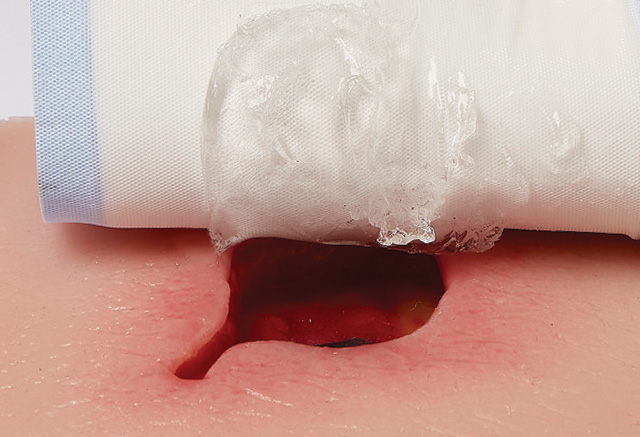
Before applying PluroGel, first cleanse or irrigate the wound with saline or wound cleanser. With shallow wounds you can apply PluroGel directly to the wound or on a sterile, absorbent secondary dressing. Apply it about 3mm thick, approximately the thickness of a nickel.
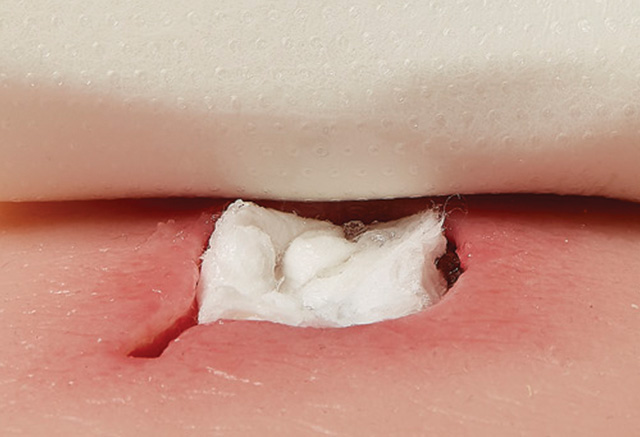
For deep or tunneling wounds, saturate a packing strip with PluroGel and place gently into the wound, leaving the end of the strip outside of the wound. Then cover it with a silicone foam dressing. Change it daily or up to every three days. For less frequent changes, apply 5mm thick.
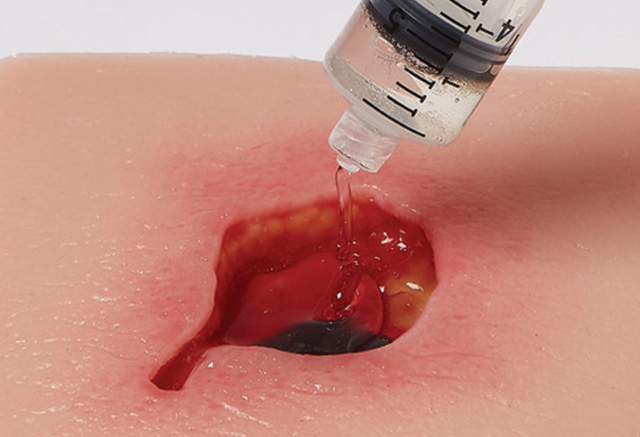
For wounds with a little more depth, you can liquefy PluroGel by cooling it. Then pour it in the wound or moisten a gauze packing dressing with it and place it in the wound bed. Then cover with your secondary dressing. Remember, PluroGel can also be used in combination with compression.
Does PluroGel really work?
Clinicians and doctors who use PluroGel report significant results. For instance, in one case study, a 70-year-old male had a non-healing wound on his lower leg with exudate. He reported his pain as an 8 out of 10. Although antibiotics, silver dressing, methylene blue and gentian violet were tried, the wound was still not healing. The caregiver changed to PluroGel, along with a silicone foam dressing and compression therapy.
After eight weeks, the wound size had shrunk by nearly 82% in size.3 The patient reported no pain during or after dressing changes.
Read more PluroGel patient case studies.
Is PluroGel cost-effective?
Medline’s Vice President of Health Economics Margaret Halstead points out an important concept about the cost of any product: “The most expensive therapy is the one that doesn’t work,” she says. Price might be defined as the literal budget line-item for any individual skin health product, but “cost” takes much more into consideration, including time to healing and percentage of wound reduction.
The most expensive therapy is the one that doesn’t work.

Margaret Halstead
Medline Vice President of Health Economics
“Positive outcomes usually produce money-saving in the long run,” notes Andy Wheeler, Director of Therapy Services at VNA Health Group in New Jersey, and a Medline consultant. When Wheeler tried PluroGel, he says, “It quickly made sense to spend the money upfront and have the patient benefit.”
PluroGel also comes in four sizes to accommodate all wound needs, cutting down on waste: a 0.25-ounce tube, the 0.7-ounce tube, 1.75-ounce tube or jar, and a 14.1-ounce jar.
Key takeaway
Biofilm is often to blame for wounds that aren’t healing. PluroGel has a unique mechanism of action that has been shown (in-vitro) to help disrupt and prevent biofilm.2,5 PluroGel has been shown to remove barriers to healing and improve patient adherence to treatment. Moreover, the main ingredient in Plurogel Poloxamer 188 has been shown ex vivo to decrease inflammation and tissue damage.6,7 See what PluroGel can do for your patients: Request a sample.
References:
- Attinger, C., & Wolcott, R. (2012). Clinically Addressing Biofilm in Chronic Wounds. Advances in wound care, 1(3), 127–132. Available at https://doi.org/10.1089/wound.2011.0333
- Yang, Q., Larose, C., Della Porta, A. C., Schultz, G. S., & Gibson, D. J. (2017). A surfactant-based wound dressing can reduce bacterial biofilms in a porcine skin explant model. International wound journal, 14(2), 408–413. Available at https://doi.org/10.1111/iwj.12619
- Data on file
- Woo K, Hill R, LeBlanc K, Percival SL et al. Effect of a surfactant-based gel on patient quality of life. J Wound Care 2018; 27(10):664–677. Available at https://doi:10.12968/jowc.2018.27.10.664
- Yang, Q., Schultz, G. S., & Gibson, D. J. (2017). A Surfactant-Based Dressing to Treat and Prevent Acinetobacter baumannii Biofilms. Journal of Burn Care & Research, 39(5), 766–770. https://doi.org/10.1093/jbcr/irx041
- Curry DJ, Wright DA, Lee RE, Kang UJ, Frim DM. Surfactant poloxamer 188-related decreases in inflammation and tissue damage after experimental brain injury in rats. Journal Neruosurg 2004;101(1 Suppl):91-96. Available at: https://pdfs.semanticscholar. org/8a72/37f6bfdfc7e9a7d12d673ec05ddacf754d15. pdf?_ga=2.266989255.870468603.1543508642- 1669357893.1543508642. Accessed November 29, 2018.
- Hunter RL, Luo AZ, Zhang R, Kozar RA, Moore FA. Poloxamer 188 inhibition of ischemia/reperfusion injury: evidence for a novel anti-adhesive mechanism. Ann Clin Lab Sci. 2010;40(2):115-125.
